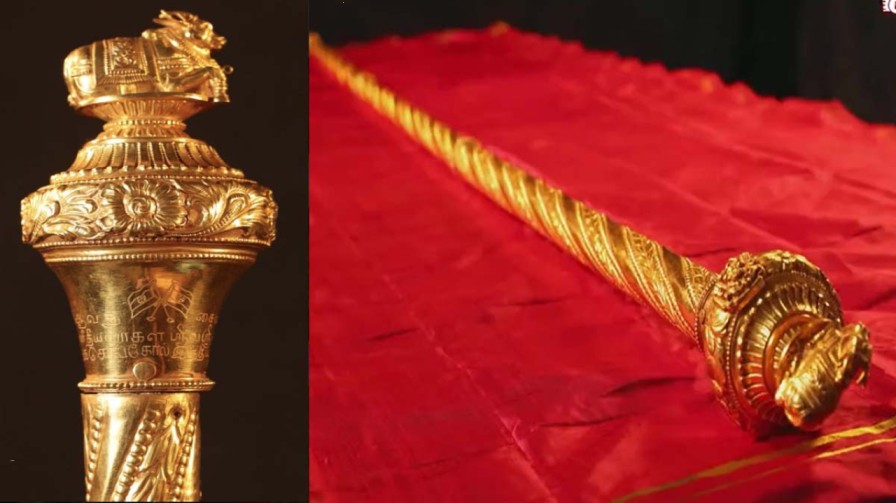The New Parliament Building, which is a component of the Central Vista redevelopment project, was officially opened by the Prime Minister on 28 May 2023. One of the centerpieces of the event was the installation of a revered golden scepter called sengol near the speaker’s seat. Sengol represents the independence, sovereignty, cultural diversity and history of India.
What is Sengol?
Sengol, which is derived from the Tamil word “semmai” and means “righteousness”, has a deeper meaning. It was constructed of gold or silver and was often decorated with precious stones. Emperors carried a sengol scepter during ceremonial events to symbolize their power. It is associated with the Chola Empire, one of the most enduring and powerful dynasties in South India.
History of Sengol :
In essence, “sengol” is a scepter. One of the longest ruling dynasties in history, the Chola dynasty of South India, where Sengol first appeared. Jawaharlal Nehru, the first Prime Minister of independent India, accepted “Sengol” as a symbol of the handover of authority from the British. After this it was kept in the Allahabad Museum.
What matters most is the expectation that the person receiving the sengol will rule justly and fairly. On 14th August, the “sacred sengol ceremony” was held shortly before Pandit Nehru’s famous midnight “Tryst of Destiny” speech. It represents the need for just, policy-compliant and morally righteous governance.
From the ninth to the thirteenth century CE, the Cholas ruled parts of Tamil Nadu, Kerala, Karnataka, Andhra Pradesh, Telangana, Odisha and Sri Lanka. They were famous for their temple construction, maritime trade, administrative effectiveness and military might. The Sengol scepter was traditionally passed from one Chola king to another as a symbol of legitimacy and succession. A high priest or guru usually presides over the event, blesses the new emperor and confers on him the title of Sengol.
Significance of Sengol :
Sengol holds relevance in the political symbolism of India. The recent decision of the Government of India to install Sengol in the new Parliament House underlines its historical continuity and reaffirmation of national pride. It is seen as a reflection of the values India gives to the religion and its principles. After knowing about Sengol and its historical fact, PM Narendra Modi decided to present it to the nation on the opening day of the Parliament. Sengol’s presence in the Parliament House will serve as a link to India’s rich cultural and historical heritage for the present and future generations of Indians.
Qns : Who recieved Sengol for the first time?
(A) Narendra Modi
(B) Mahatma Gandhi
(C) Jawaharlal Nehru
(D) Indira Gandhi
Ans : (C) Jawaharlal Nehru




